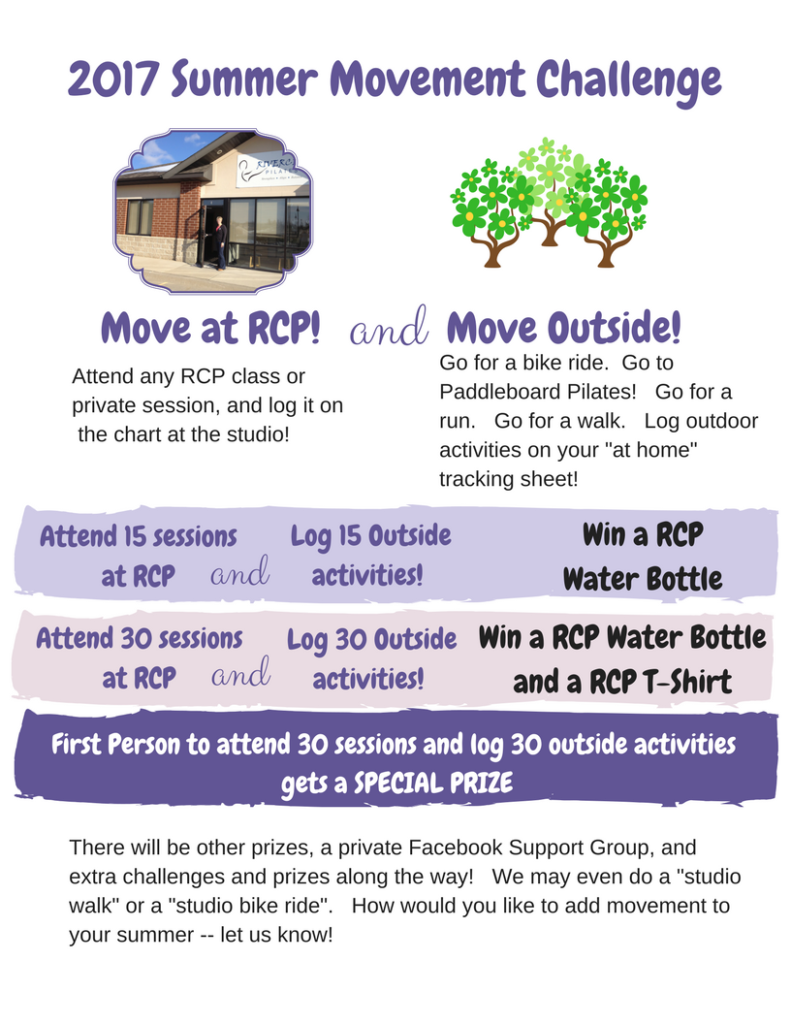



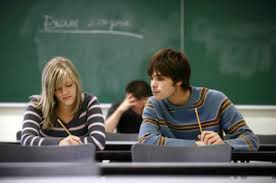 Most of us are naturally visual learners when it comes to movement. In many ways this can be very helpful. When our body is trying to figure out how to do a new skill or movement it needs all the input it can get to try to figure out what it is trying to accomplish and how to do it. Visually seeing something is one of the many ways that your brain processes what it is trying to do. The problem with visually watching something and trying to repeat it is that when we don’t do the movement exactly like what we saw we get frustrated and sometimes overwhelmed! We start to feel like we are failing or not getting something out of the movement because it does not look a certain way.
Most of us are naturally visual learners when it comes to movement. In many ways this can be very helpful. When our body is trying to figure out how to do a new skill or movement it needs all the input it can get to try to figure out what it is trying to accomplish and how to do it. Visually seeing something is one of the many ways that your brain processes what it is trying to do. The problem with visually watching something and trying to repeat it is that when we don’t do the movement exactly like what we saw we get frustrated and sometimes overwhelmed! We start to feel like we are failing or not getting something out of the movement because it does not look a certain way.
As Pilates teachers we know that the goal of an exercise is not to “look a certain way”. The goal of an exercise involves gaining strength and flexibility in a balanced way as you do a skill like articulating through your spine or moving your leg in space while supported from your core muscles. Accomplishing the goals of an exercise can look very different in different bodies. This is why as teachers we often try to use our words to describe an exercise instead of just demonstrating an exercise. We also try to give options in a multi level class on how you can do the movement best in your body.
At our studio we have a variety of clients, with a variety of different body shapes, sizes and different injuries or ailments. You can often peek at a Pilates class and see many different bodies doing what looks like very different things even though they are all doing the same exercise. If you are new to the Pilates method of exercise and just starting to take classes this can be super confusing. Because we are not accustom to taking verbal cues to learn new movements, the first thing new clients often do in class when learning something new is look at their neighbor and try to repeat what they are doing. But what happens when your neighbors in class are doing what looks like two completely different things? Your brain and your body get overloaded with confusion!!!
So my best advice for new clients is to try to avoid just watching other clients to learn exercises. Do your best to listen to the explanations of the movements and the goals of the exercise that your teacher is saying. If this is hard for you…you are not alone! Know that this way of learning often takes some practice- so don’t be too hard on yourself! Try not to worry what the movement looks like but instead focus on how it feels. If you have specific questions about how you could get the most out of an exercise in your body definitely ask your teacher. If you are not comfortable doing this in class or before or after class, maybe try a one on one session where your teacher can give you individual attention on each exercise.
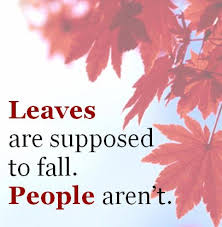 Are you nervous about falling? Besides the dangers of injury when you fall, maybe even a bigger concern is your loss of mobility and even independence in your body that makes you more susceptible to falls.
Are you nervous about falling? Besides the dangers of injury when you fall, maybe even a bigger concern is your loss of mobility and even independence in your body that makes you more susceptible to falls.
There is a lot of talk about the dangers of falling as we age and how important it is to work on things like balance, strength and flexibility to prevent falls…but what does this really mean? When we see an elderly person who is not moving very well it is easy to spot how falling would be a hazard…but how do we prevent ourselves from getting to that “not moving very well” place in life.
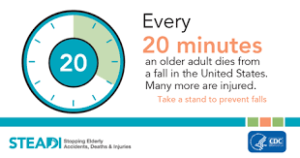
In simple terms,” Move it or lose it!”
When our bodies quit doing movements they get stiff, our muscles get weaker and our brain/body connections that help us react to balancing our bodies in space…get slower. One of the best things we can do to practice staying mobile and active is to practice in a controlled, safe environment movements that challenge our strength, balance and flexibility so that we are better prepared to react and adjust to whatever movements and obstacles day to day life throws at us.
One of the things I love about the Pilates Method of exercise is how is teaches bodies of any age to move better. It teaches people to move with control and precision while practicing movements that strengthen their core muscles, keeps their spine flexible and healthy, strengthens the whole body while maintaining and improving range of movement, and makes your brain and body work together.
I would call any of our Pilates classes, fall prevention classes but our new Live Strong Pilates class is geared toward an age range (65 years young and older) where fall prevention becomes more and more important. We’ll be incorporating the Pilates Method into a total body workout designed to help you move better and stay away from the “not moving very well” place in your body. Classes are limited to 6 participants to ensure a safe, small group atmosphere.
 Last week I talked about one of the two questions I always ask Kelly when she comes in for a session. Today I talk about the other question,” How far have you run or biked since I last saw you?”. Now you are probably thinking, that’s seems like a pretty reasonable, expected question from your trainer or coach right? But what I think might surprise is you why I ask Kelly that question. Sure, part of the reason I ask her is because I want to know what she has been doing with her body. I want to know if tightness or patterns I see in her movement are from her biking and running or if they are more related to what is going on in her body from her Crohns and Fibromyalgia.
Last week I talked about one of the two questions I always ask Kelly when she comes in for a session. Today I talk about the other question,” How far have you run or biked since I last saw you?”. Now you are probably thinking, that’s seems like a pretty reasonable, expected question from your trainer or coach right? But what I think might surprise is you why I ask Kelly that question. Sure, part of the reason I ask her is because I want to know what she has been doing with her body. I want to know if tightness or patterns I see in her movement are from her biking and running or if they are more related to what is going on in her body from her Crohns and Fibromyalgia.
More important than what is going on physically in her body, I ask Kelly that question because I want to know how she is doing from an emotional state. You see Kelly, like many people with chronic diseases deals with depression and anxiety on a regular basis and it’s not something she likes to talk about (who does?). She has figured out though that movement and exercise can help her better deal with these issues and often turns to them as a health tool. In so many ways…this is amazing! There are a lot of choices and options of how to deal with depression, anxiety and stress in your life and exercise is definitely a pretty positive one!
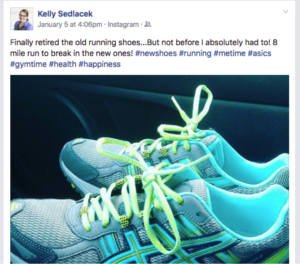 The only down side to using exercise is that sometimes( Ok..many times!) Kelly over does it. In an attempt to feel better emotionally she runs 10 miles or bikes 50 and then her physical body pays the toll for it in the days after. One of the many reasons I think Pilates has been so great for Kelly is that she can get the emotional benefits of a movement practice without all of the harsh effects of hours of running or biking.
The only down side to using exercise is that sometimes( Ok..many times!) Kelly over does it. In an attempt to feel better emotionally she runs 10 miles or bikes 50 and then her physical body pays the toll for it in the days after. One of the many reasons I think Pilates has been so great for Kelly is that she can get the emotional benefits of a movement practice without all of the harsh effects of hours of running or biking.
So what do I do as Kelly’s teacher when she tells me she ran a half marathon the day before? I usually try to do what I would call a “listen to your body” movement session. We slow down, we listen to what her body is telling her and me and we try to do things that it needs.
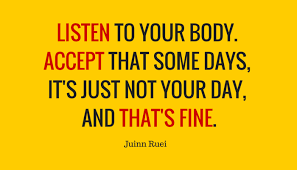 This is my attempt as a teacher to help Kelly figure out how to listen to her own body. My attempt to help her figure out that she is so much more capable than she realizes at figuring out what her body needs and giving her permission to do whatever that is. Giving permission seems like a funny phrase when it comes to movement, but I think it’s appropriate. I think so many people feel like there is a rule book of what you need to do to be in shape, be healthy and fit. The only rule is you listening to your body and doing what works for you, what makes your body and life feel the best.
This is my attempt as a teacher to help Kelly figure out how to listen to her own body. My attempt to help her figure out that she is so much more capable than she realizes at figuring out what her body needs and giving her permission to do whatever that is. Giving permission seems like a funny phrase when it comes to movement, but I think it’s appropriate. I think so many people feel like there is a rule book of what you need to do to be in shape, be healthy and fit. The only rule is you listening to your body and doing what works for you, what makes your body and life feel the best.
Here’s a mini mat workout you can do at home. When it comes to creating a Pilates habit, one of the most important things is to just do it. We know that with your busy schedules it’s not always easy to get in for a full class.
When working out at home try to work on your flow and transition from one exercise directly into the next. This mini workout will take you less than 10 minutes – so there’s no excuses to not sneak it in :).
We’ve also listed the exercises and traditional repetitions for you below. If you consistently do this workout you will start to know the movements in your body and not even need the video!
Hundreds– 10 breaths or 100 pumps of the arms
Roll up – 5 to 8 reps
Single Leg Circles – 5 in each direction
Rolling Like a Ball – 5 to 8 reps
Stomach Series:
Single Leg Stretch– 5 each leg
Double Leg Stretch – 5 each
Scissors – 5 each
Double Leg Lower Lift – 5 each
Elbow to Knee – 5 each side
Spine Stretch – 5-8 reps
Try it out and let us know what you think! If you like it- be sure to click like and share it with your friends so they can try it too!
Rivercity Pilates offers in-studio and virtual classes to fit all your needs and whatever your schedule allows. Get started today.
1210 North Jordan #1
North Liberty, IA
(319)665-2499
Regular Studio Hours: Sessions are available daily by appointment from 5:30 a.m. – 8 p.m.
